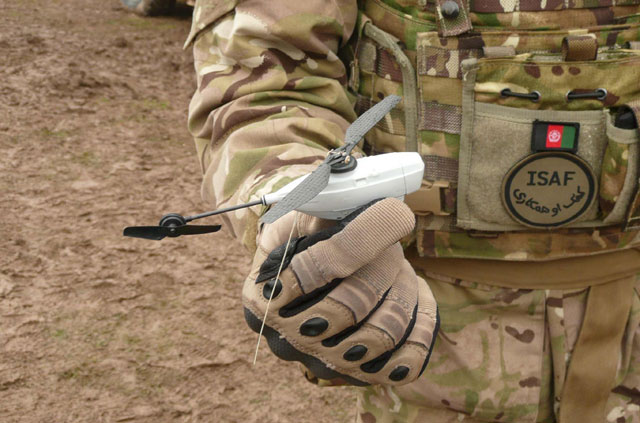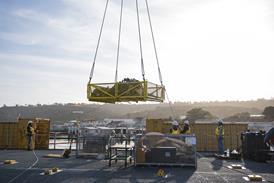More details have been revealed about the British Army's new Black Hornet nano-unmanned air system, with users declaring the 4.7in-long (120mm) aircraft an "unbelievable" asset.
Around 60 of the systems - 200 of which have been procured from Norwegian manufacturer Prox Dynamics, through UK intermediary Marlborough Communications for £20 million ($31 million) - are already in use by British troops in Afghanistan. The remainder, minus an unspecified number to be held back for training, will arrive in theatre during the forthcoming Herrick 18 deployment.
Each Black Hornet system consists of two aircraft, with a single controller for the UAS and its payload and a base station. A tablet-sized monitor is also part of the package, which totals approximately 2kg (4.4lb).
 |
|---|
Angus Batey |
The UAS carries three cameras - one looking straight ahead, one straight down and one at 45˚ forward and down. While the aircraft is flown manually to its target, it cannot be launched until it has established the GPS co-ordinates of itself and its base station. When the end of the 20min maximum flight time nears the system alerts the operator, who then has the option to command the aircraft to automatically return.
Black Hornet's ability to acquire 10-figure grid references is sufficiently detailed to be used to direct air or artillery strikes, while data and imagery acquired in flight can be stored and uploaded to central databases.
The system is already being used widely during general patrols in Afghanistan, with its principal advantage over other British Army UAS in theatre being its speed of operation.
"You don't have to ask permission from higher [up the command chain] to fly something like this," Sgt Carl Boyd of 1st Battalion The Royal Regiment of Fusiliers, said during a media visit to pre-deployment training on Salisbury Plain, Wiltshire, on 13 February.
"If I want to get eyes-on in a nearby compound, instead of having to ask for [surveillance] assets, I just get the Hornet out. From getting the GPS log I can get that up and running in about a minute," he said.
Source: Flight International























